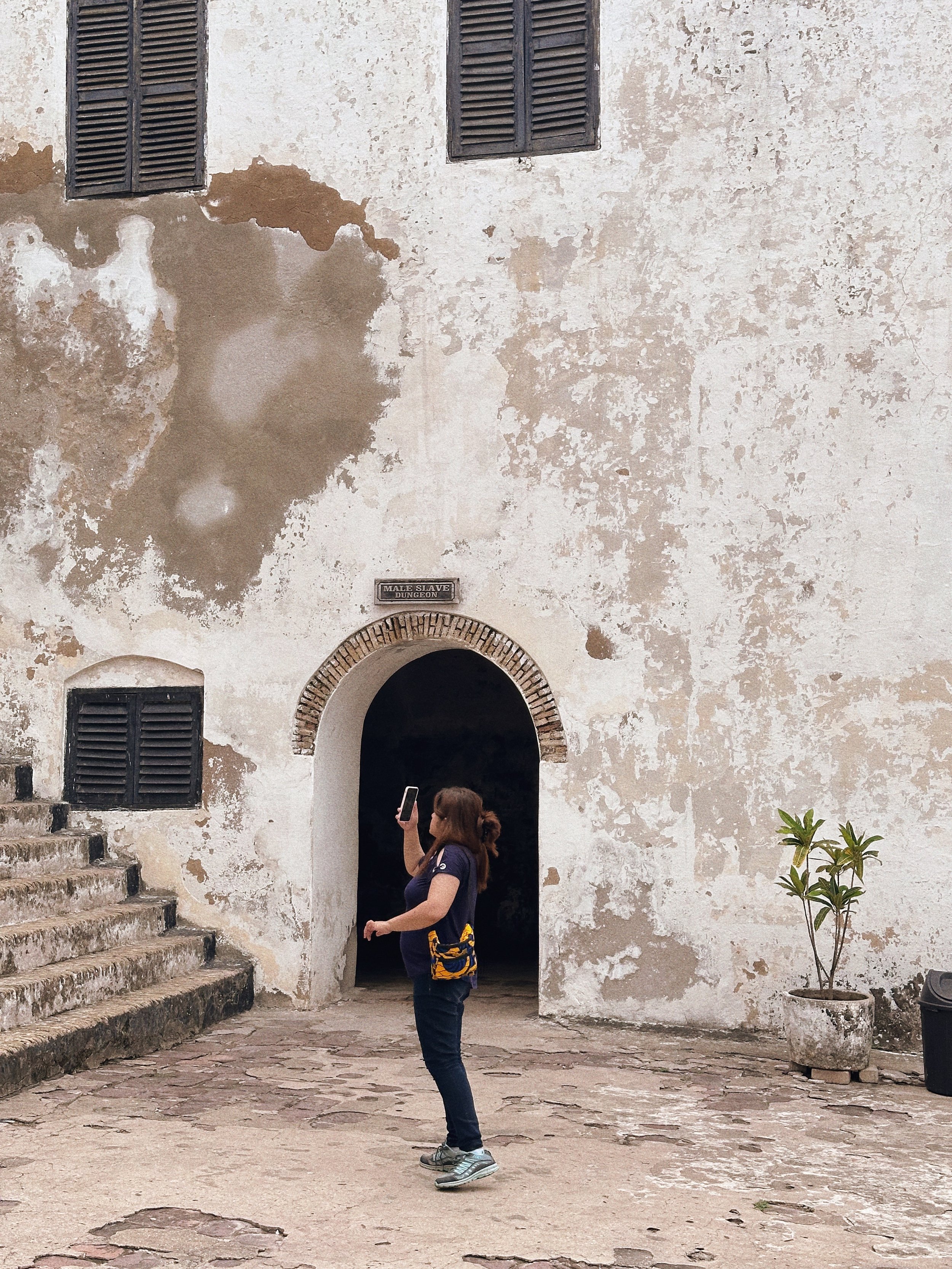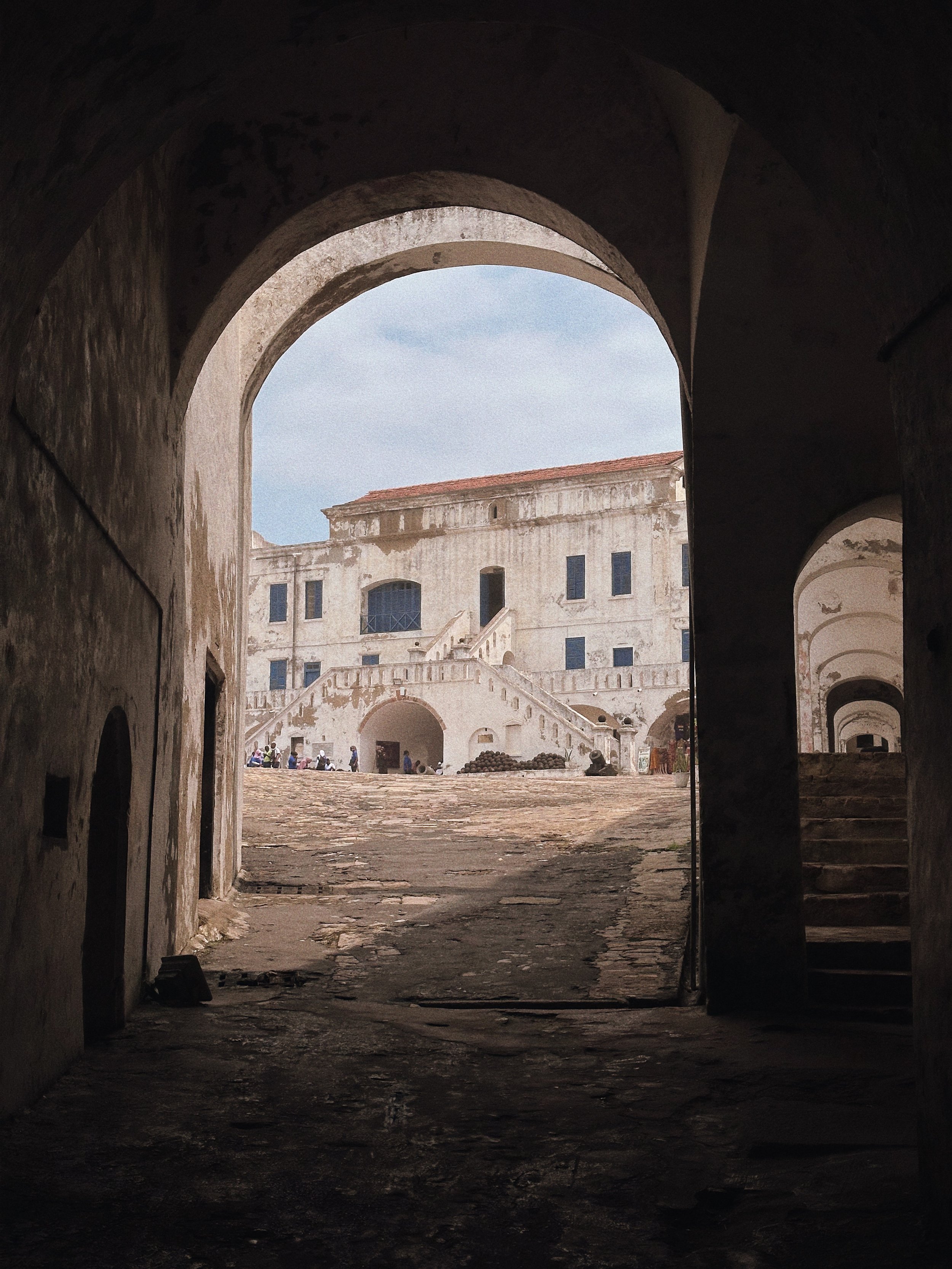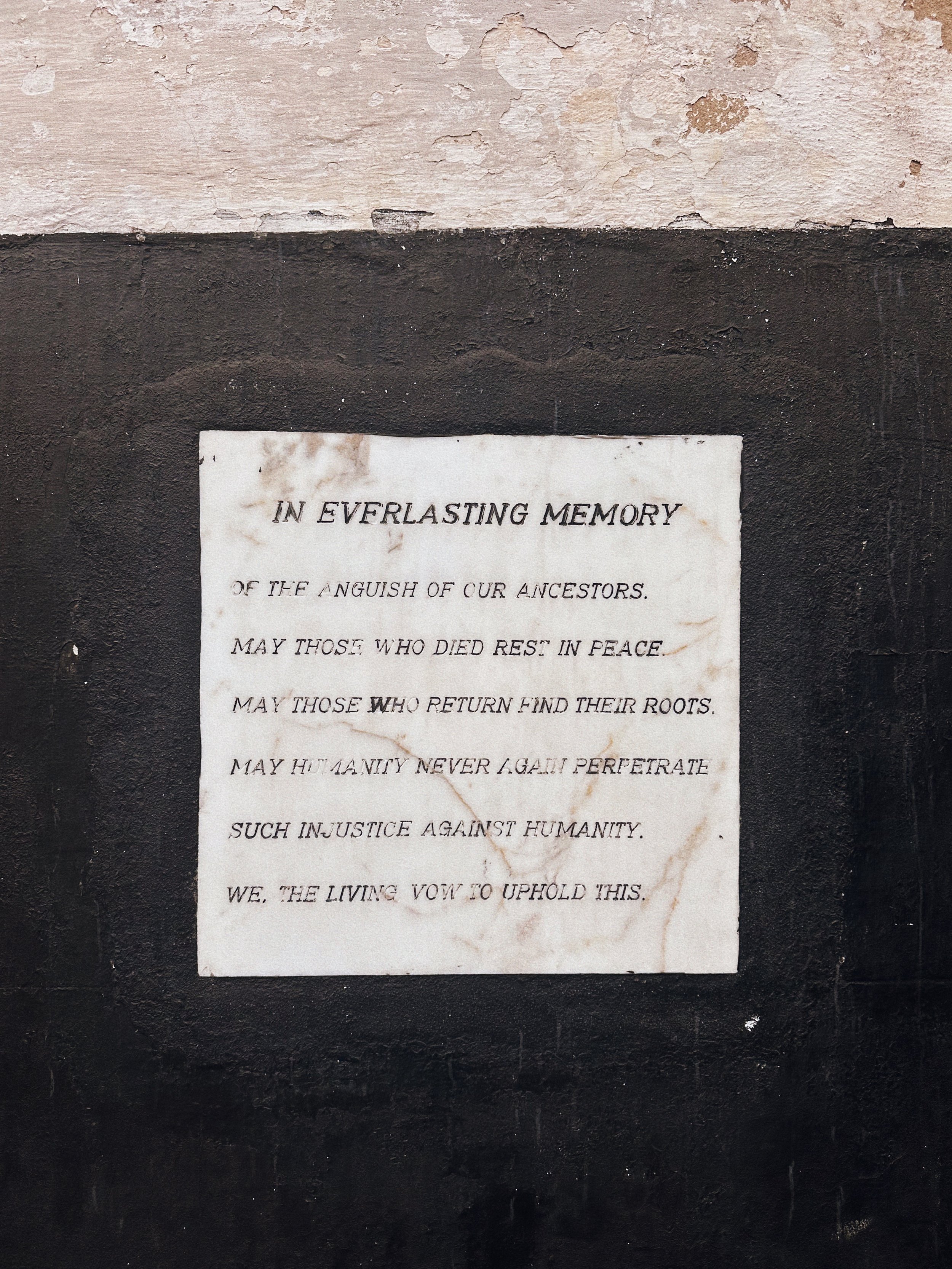Exploring the Shadows of History: A Journey Through Elmina Castle and Cape Coast Castle
Content Warning: The following blog post discusses topics related to sexual assault and slavery.
“Tai, teacher, why are there so many wars? We’ve studied war after war in this textbook,” a student asks during our fifth-grade history class.
We had just finished reading about the Thirty Years' War, a religious war in Europe between Roman Catholics and Protestants from 1618 to 1648.
“I know everyone. It is so sad to read about all these wars that happen over and over. You think these events would be lessons from one generation to the next, that they would never repeat such terrible things again,” I respond solemnly.
Day 1: Elmina Castle
Elmina became the center of Portuguese trade on the Gold Coast in gold and, later, slaves.
On a sun-drenched Friday morning, our cohort embarked on a journey that I knew would be enlightening and heart-wrenching. Elmina Castle, one of the oldest European buildings in sub-Saharan Africa, awaited us. As I approached the imposing structure, its whitewashed walls gleaming under the Ghanaian sun, I felt a sense of nervousness mixed with gloom (honestly, a bit of fear, too). This was not just a visit to a historical site, but a journey through history to where one of humanity's darkest chapters unfolded.
The moment I stepped through the weathered gates of Elmina Castle, a heavy silence enveloped me. The bustling noises of the outside merchants trying to sell souvenirs faded, replaced by the whispers of the past. The castle, originally built by the Portuguese in 1482, had witnessed centuries of human suffering. At first, it played a huge role in the gold trade, then a larger role in the Transatlantic Slave Trade. This castle was the largest castle being reported to have had 500 African slaves a month and 6,000 slaves a year. As our tour guide spoke to us, the gravity of what transpired within these walls began to sink in.
Our guide, a man with a somber expression and a voice filled with reverence, led us to the dungeons. These dark, damp spaces were once packed with men, women, and children torn from their homes and thrust into a nightmarish existence. The conditions they endured were unimaginable: confined in suffocating cells, deprived of light and fresh air, and subject to disease and despair. The walls, thick with centuries of grime, seemed to close in on us, amplifying the sense of claustrophobia.
This castle was the largest castle being reported to have had 500 African slaves a month and 6,000 slaves a year.
Up to 200 women would be crammed into this small space, shackled together, and forced to sit in their own filth for weeks, sometimes months.
I felt a profound sorrow in one of the female dungeons. The guide explained how up to 200 women would be crammed into this small space, shackled together, and forced to sit in their own filth for weeks, sometimes months, awaiting transport across the Atlantic. The air was heavy with the scent of the sea and the mustiness of stone, creating an oppressive and haunting atmosphere. As I ran my fingers along the rough, cold walls, I could almost hear the echoes of their cries, feel their anguish, and sense their desperation.
The only time these people would ever get a chance to be clean was when they were chosen to be raped by the governor of the castle. The women were assembled in the courtyard and would be shown to the governor as he looked for the best looking to spend the night with. She would then be washed clean of the filth with water from the well in the above photo. Then, she was brought up the stairs to the governor’s quarters.
The governor's view, looking down at the enslaved women.
The women's view waiting for the governor to choose a woman to rape.
The governor's quarters stood in stark contrast to the dungeons below. These spacious rooms, with large windows overlooking the sea, were a world apart from the horrors beneath. It was chilling to think that while enslaved people suffered below, life continued above with a sense of normalcy and detachment - and, of course, colonizer’s privilege.
One of the most moving moments of the tour was when we reached the "Door of No Return." A passageway led to a narrow doorway, leading directly to the waiting slave ships, which was the final threshold for countless Africans. When the ships docked to transport the prisoners, this would be the last time any of them saw their friends and family. A final farewell.
We must learn from the past to never allow these atrocities to ever happen again.
A wave of emotion overwhelmed me as I stood there, gazing out at the vast expanse of the Atlantic Ocean. This was the point of no return, where dreams were shattered, and lives were irrevocably altered. Tears welled up in my eyes as I imagined the agony and despair felt by those who had passed through this door, leaving everything they knew and loved behind.
This was just the start of a disgusting part of human history. Just the beginning.
The thought of the journey that lay ahead for these enslaved individuals was unbearable. Packed like cargo in the holds of ships, they faced a treacherous voyage across the Middle Passage. Many did not survive the journey, succumbing to disease, malnutrition, and the brutality of their captors. Those who did survive arrived in foreign lands, stripped of their identities and forced into lives of unimaginable hardship and suffering.
Day 2: Cape Coast Castle
The next day, we made our way to Cape Coast Castle, another castle that played a heavy role in the Transatlantic Slave Trade. Saturday's skies were overcast, casting a somber tone over the visit. With its thick walls and foreboding presence, the castle loomed ahead as I approached. Built by the Swedes in 1653 and later renovated and expanded by the British, it served as one of the most significant slave trading posts in West Africa.
As I entered the castle, a sense of dread settled in my chest. The tour began with a descent into the male dungeons. Though similar to those at Elmina, these spaces held unique horrors. Elmina was a castle that was adapted to keep slaves, while Cape Coast Castle was renovated and expanded for the slave trade.
A model of the Cape Coast castle on display at the visitor center.
Students visiting Cape Coast castle.
The air was thick with history and sorrow. The guide's words painted vivid pictures of the overcrowded conditions, the lack of light, and the pervasive stench that would have filled these spaces. It was impossible to comprehend the suffering. Our tour guide tried his best to show us the conditions in the dark-filled dungeons, and just being there for two minutes was torture - I couldn’t imagine being there for months.
I paused in the castle's courtyard to reflect. The stark contrast between the beauty of the ocean and the castle's horrific past was jarring.
The final stop was the "Door of No Return" at Cape Coast Castle. Elmina Castle’s door was only made for one person at a time, while this door was made for crowds to pass through. Looking at the endless horizon, I mourned for the millions of Africans torn from their homes. Many died before the door, and even more never had the chance to return. Looking out at the ocean, it was hard to appreciate the tranquility of its waters, knowing the history that lay in its waves.
The final look before being taken onto the ships.
As opposed to the "Door of No Return" at Elmina Castle, Cape Coast's door was made for large amounts of slaves to pass through.
The final stop was the "Door of No Return."
Reflections: A Journey Through Pain and Resilience
Exploring Elmina Castle and Cape Coast Castle was an emotionally charged experience. These fortresses are more than historical sites; they are sacred grounds that echo the pain and resilience of the past. The stories of the enslaved Africans are not just tales of suffering but also of incredible strength and perseverance.
As I left the castles behind, I carried a deeper understanding of the past and a commitment to honor the memories of those who endured unimaginable hardships. This journey was a powerful reminder that history, no matter how painful, must be remembered and confronted. We hope to build a future rooted in justice and compassion only through acknowledging our past.
Solemn, but beautiful, many African countries created a pan-African initiative called “The Door of Return,” turning their dark history into a hopeful future. On the other side of Cape Coast Castle’s “Door of No Return” is their “Door of Return.”
The United Nations declared 2015 – 2024 the International Decade for People of African Descent, a decade dedicated to fighting racism, xenophobia, and intolerance in Africa's diaspora worldwide. The new door was an invitation for the diasporas of Africa to return to their roots and bring the memories of their ancestors back.
The “Door of Return" is an invitation for the diasporas of Africa to return to their roots and bring the memories of their ancestors back.
When I was a teacher, I tried my best to instill knowledge in my students that would help them understand the world and shape their future. Lessons we learn in history are key to our future. We acknowledge the devastations and pains when looking at the tragedies that humankind created. The pain of the past needs to be remembered to help humanity never repeat similar atrocities. I can only hope we continue to learn from our mistakes.
In everlasting memory of the anguish of our ancestors. May those who died rest in peace. Math those who return find their roots. May humanity never again perpetrate such injustice against humanity. We the living vow to uphold this.
Medaase,
- Tai Le













